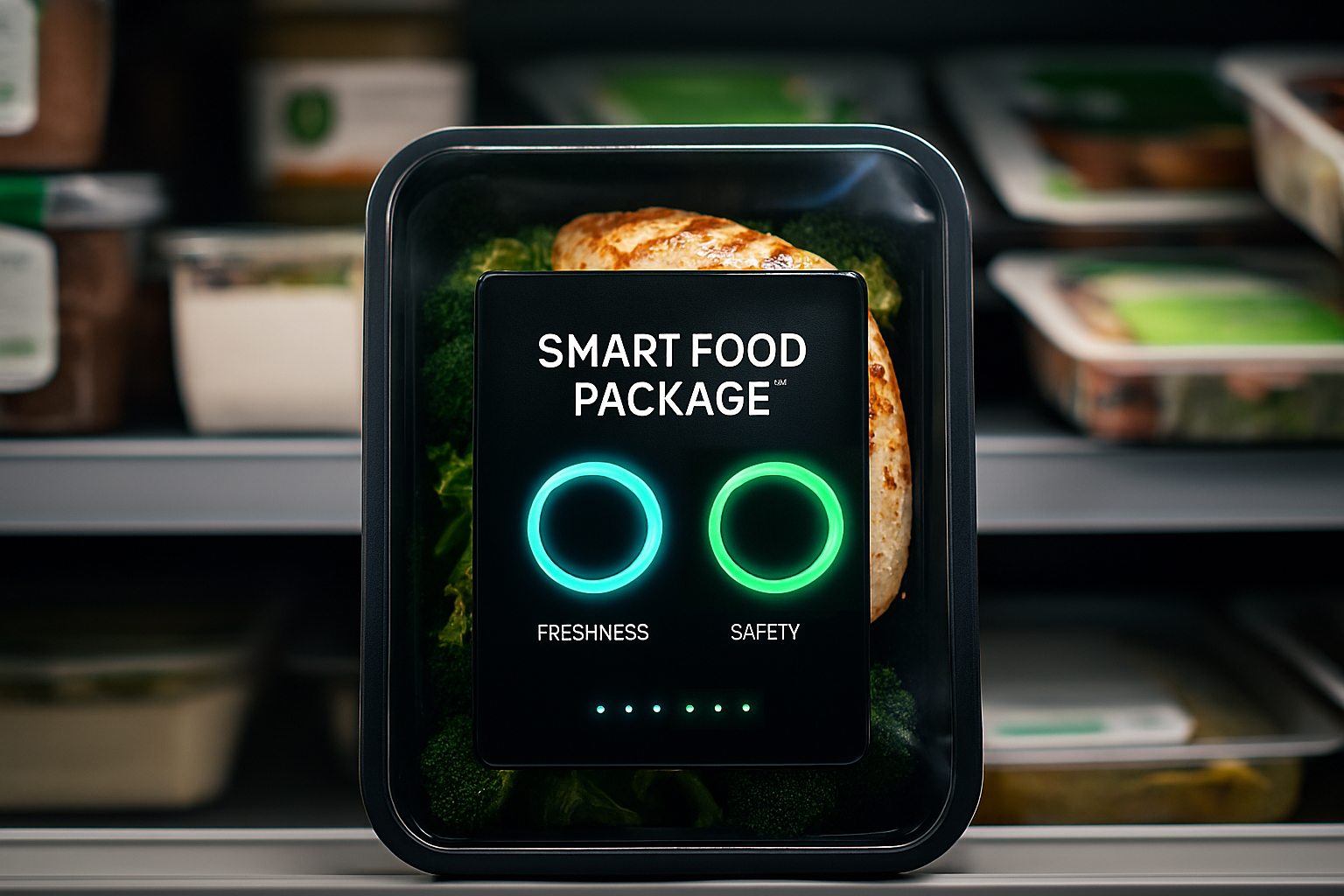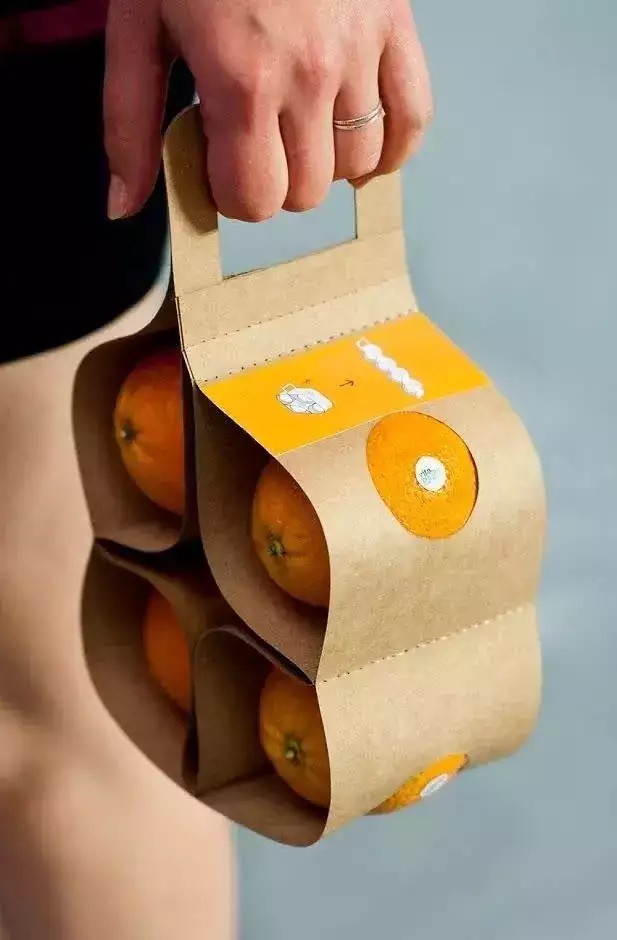Smart Packaging: The Secret Weapon to Multiply Your Food Sales

Imagine you're standing in a crowded supermarket aisle. Hundreds of products compete for your attention. In this visual battle, which product wins? The one that's just a "container," or the one that offers an "experience"?
The answer separates ordinary businesses from leading brands. The era when packaging was just a shell to protect the product is over. Today, smart packaging is the most powerful tool for marketing, customer loyalty, and boosting sales. In this article, we will deeply explore how smart packaging can transform the destiny of your food business.
Part 1: What is Smart Packaging? Beyond a Can or Carton
Smart Packaging refers to a system that, in addition to its primary protective role, provides added functionality through technology, design, or materials. In the food industry, this packaging falls into three main categories:
- Active Packaging: This packaging actively interacts with the product to enhance its quality and shelf life.
- Example: Oxygen absorbers in coffee packages, moisture absorbers in cracker packs, or trays containing spices that inject flavor into meat.
- Intelligent Packaging: This packaging provides information about the product's condition or its surrounding environment.
- Example: Color-changing labels indicating if the product is sufficiently cool (e.g., milk bottles), or freshness indicators that show the real-time expiration date.
- Connected Packaging: This packaging uses technologies like QR codes, NFC, or AR to create a bridge between the physical and digital worlds.
- Example: Scanning a QR code on a sauce package to access a video recipe or enter a giveaway.

Part 2: Why Smart Packaging is a Revolution for the Food Industry
In the sensitive food industry, smart packaging is not just a luxury option but a strategic necessity.
- Fighting Food Waste: According to FAO statistics, 1.3 billion tons of food are wasted annually worldwide. A significant portion of this waste is due to fixed and inaccurate expiration dates. Smart packaging, by showing the actual freshness, allows consumers to make more accurate judgments, preventing the disposal of safe products.
- Enhancing Food Safety: Time-Temperature Indicators (TTIs) on frozen or perishable food packaging assure the customer that the cold chain hasn't been broken and the product is completely safe.
- Transparency and Building Trust: A modern consumer wants to know the origin of the product's ingredients. By scanning a code, they can fully trace the product's journey from farm to shelf. This transparency creates deep and irreplaceable trust.
Part 3: How Smart Packaging Directly Multiplies Your Sales
Now, let's get to the main question. Here's exactly how smart packaging works to increase sales:
- Turning One-Time Buyers into Loyal Customers
Ordinary packaging is discarded after opening. But smart packaging is where the relationship with the customer just begins.- Practical Example: Imagine a luxury jam brand with a QR code on each jar lid. When a customer scans it, they are directed to a dedicated page including: creative dessert recipes using that jam, the story of the farmers who grew the fruits, and a 20% discount code for the next flavor. This guarantees the next purchase and builds brand loyalty.
- Justifying Higher Prices and Increasing Profit Margins
Customers are willing to pay more for added value. Smart packaging clearly demonstrates this value.- Practical Example: Imagine a premium saffron or tea brand using packaging with an oxygen absorber and a UV indicator to authenticate the product. This packaging proves to the customer that this is a superior, high-quality item, allowing it to command a price multiple times higher than competitors.
- Creating an "Unboxing Experience" That Goes Viral on Social Media
In the age of Instagram and TikTok, your packaging is your best tool for viral marketing.- Practical Example: A chocolate brand whose packaging is designed like a puzzle or uses Augmented Reality (AR) to display a 3D animation on a mobile phone. Customers love sharing such unique experiences. This is thousands of times more valuable than paid ads, exposing your brand to millions for free.
- Collecting Valuable Data for Precision Marketing
Every time a customer scans the QR code on your product, you are collecting data.- Practical Example: You find out which recipe got the most clicks, which cities your customers live in, and when they scanned the product. This data allows you to design highly targeted marketing campaigns and dramatically increase your Conversion Rate.
- Beating Competitors on the Store Shelf
When your product sits alongside dozens of similar ones, a freshness indicator showing green, or interactive packaging, immediately catches the hesitant customer's eye. This is the "moment of truth" in the store that can sway the purchase decision in your favor.

Part 4: How to Implement? A Practical Roadmap for Your Business
Implementing smart packaging doesn't require a revolutionary and costly start. You can proceed step by step:
- Start Simple: Begin by printing a QR code on your current products. Link it to an engaging landing page that tells your brand story, values, and specific instructions.
- Provide Real Value: Don't just put a standard website behind that QR code. Offer exclusive content, a surprise (like a digital recipe booklet), or a special offer.
- Choose Based on Your Product's Needs:
- If your product is highly perishable (e.g., meat, fish, dairy), invest in active (oxygen absorbers) or intelligent (freshness indicators) packaging.
- If your product is premium with a strong story (e.g., specialty coffee, spices, chocolate), focus on connected packaging (QR code for origin tracking) and luxurious design.
- Talk to Your Customers: Ask for feedback from your customers on the packaging. Ask them what's more important: longer freshness, precise nutritional information, or access to educational content?
Conclusion: Your Packaging is Your Silent Salesperson
Finally, remember that smart packaging is not a cost, but a profitable investment. It's a 24/7, tireless salesperson working for you in stores, in the customer's kitchen, and in the digital space.
Next time you look at your product, ask yourself: "Does this packaging just protect my product, or is it generating sales and loyalty for me?" The answer to this question is the difference between an ordinary business and a future super-brand.
What has been your experience with smart packaging? Share your ideas in the comments section below.



